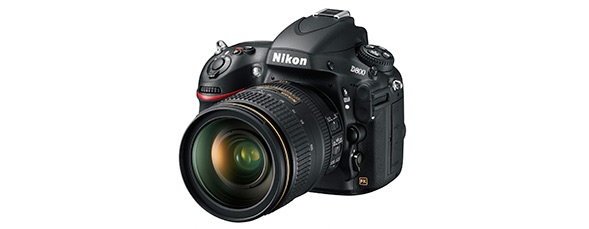Nikon D800

 36.3-Megapixel, FX-Format, HD DSLR Delivers
36.3-Megapixel, FX-Format, HD DSLR Delivers
When Nikon announced the D800 with 36.3 megapixels, my first two thoughts were: "Cha-ching, there goes my wallet;" and "It can't possibly be any good at ISO settings over 100, with so many megapixels crammed into its sensor."
I'm more than happy to say that neither of my predictions were correct. This little dynamo came in at far less cost than I expected, and it does an amazing job at higher ISO settings. I tested it at up to 1,600 and was pleasantly surprised at the quality; a little noise reduction in postproduction, and the files are great. I don't necessarily plan on using it in low light or at high ISO settings, but I know that I can boost it, if needed.
Next on my what-does-this-camera-have-to-offer list was frame rate. Even though I don't plan to use it heavily for wildlife, I wondered how fast it could fire if I wanted to shoot action. And, once again, it surprised me with a decent frame rate of 4 frames per second (fps).
The D800 boasts the same impressive, 51-point auto focus (AF) system, with possible AF in light as low as -2 EV (exposure value), and the new-style AF/MF switch as the flagship D4 that I've grown to love. Now, with a simple press of the focus-selector button, I can switch from single to continuous focus as well as select single, 9-, 21-, or 51-point 3D AF as well as Auto-area AF.
The 91,000-pixel meter is spot-on accurate even in difficult lighting situations, and the actual exposure range is expanded to capture detail even better than its predecessors. I'm finding that I don't have to correct for blown-out highlights nearly as often as before. And add to that a built-in HDR mode.
Some additional features that I've already come to rely on with my D4 are: the auto-bracketing feature, where I dial in the number of frames I need to make an HDR image, press the shutter button, and stand back while it fires off the full sequence (if the menu is set for multiple frames); and the built-in, Time-lapse mode that not only shoots up to 7 hours 59 minutes of time lapse but also processes the file in camera—instantly saving me time in postproduction.
Big inroads have been made into the video capture end of the D800 as well, making it a viable contender against its competition, with greater control over exposure adjustment during filming. It even offers the ability to send uncompressed video footage straight from the camera to an external hard drive through its HDMI port—a very big thing for professional video users who need the highest quality possible.
Not only does the Nikon D800 deliver when it comes to resolution and features, the ergonomics of the camera make it feel very good in my hands. The optional MB-D12 battery grip provides vertical controls and increased fps firing (speed varies depending on the batteries installed). All of these have made this a camera that has found a home in my bag.
All I can say about my new D800 is: Kudos to Nikon for bringing in such an incredible camera at an affordable price!
Company: Nikon Inc.
Price: $2,999.95
Web: www.nikonusa.com
Rating: 5
Hot: Amazing resolution
Not: What's not to like?
